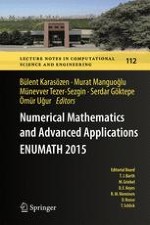The European Conference on Numerical Mathematics and Advanced Applications (ENUMATH), held every 2 years, provides a forum for discussing recent advances in and aspects of numerical mathematics and scientific and industrial applications. The previous ENUMATH meetings took place in Paris (1995), Heidelberg (1997), Jyvaskyla (1999), Ischia (2001), Prague (2003), Santiago de Compostela (2005), Graz (2007), Uppsala (2009), Leicester (2011) and Lausanne (2013).
This book presents a selection of invited and contributed lectures from the ENUMATH 2015 conference, which was organised by the Institute of Applied Mathematics (IAM), Middle East Technical University, Ankara, Turkey, from September 14 to 18, 2015. It offers an overview of central recent developments in numerical analysis, computational mathematics, and applications in the form of contributions by leading experts in the field.
